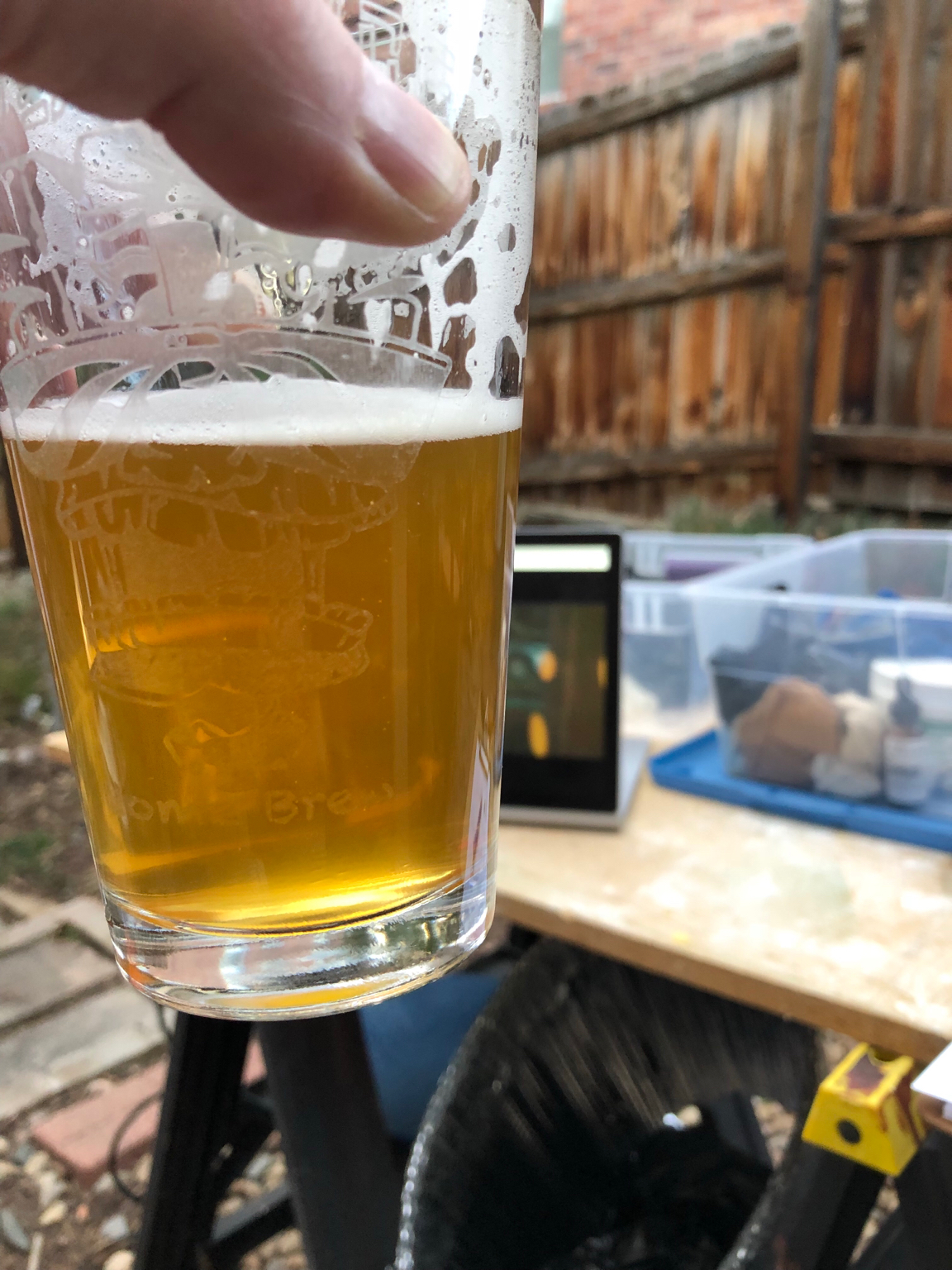Though I'd post my LoDO Big Mouth Bubbler Pressure transfer process I rigged up tonight. Might have been covered already, but...
Parts List (had most already):
Plastic Big Mouth Bubbler with spout
10' 3/8 OD 1/4 ID hose for CO2 flow (homedepot)
1/4 barb to 1/4 MFL for CO2 tank connection
3 Piece airlock (just need lower piece)
3/8 Racking hose
Liquid disconnect
Begin with a star san "water purged" keg with a small amount of co2 left. Setup is to jam the 3/8 hose into the airlock with the other end connected to tank. Set tank to 1 psi. Let flow into bucket of sanitizer while you prepare the liquid connection.
For the liquid, jam the racking hose onto the mfl of the liquid QD and screw down until snug. (future upgrade will be a 1/4 flare nut to 3/8 barb fitting, but this worked fine for today). I use this same setup to empty the star san purged keg, so the line is already sanitized. Attach to keg and while co2 is still coming out attach to spout on Big Mouth Bubbler.
Quickly replace fermenting airlock with co2 line/air lock assembly and open spout.
You'll need to hold the top of the fermenter down, as the lids on these come off easily. I held it down by holding the airlock so neither would come out from the pressure. It took me about 5 minutes to transfer 5 gallons.
I snapped a pic just prior to packing it away, next time I'll get one in process. The small line you see goes to the CO2 tank.
First pressure transfer I've done and I was extremely happy with how this went.

























![Craft A Brew - Safale S-04 Dry Yeast - Fermentis - English Ale Dry Yeast - For English and American Ales and Hard Apple Ciders - Ingredients for Home Brewing - Beer Making Supplies - [1 Pack]](https://m.media-amazon.com/images/I/41fVGNh6JfL._SL500_.jpg)

































